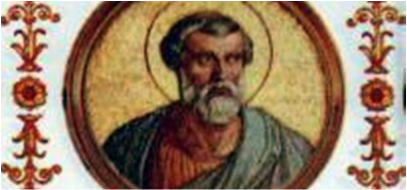Anterus, our nineteenth pope, was born around 170AD in Petilia Policastro, Calabria, by tradition. This is a town on the eastern sea coast of southern Italy, in the modern province of Crotone. That area was settled by Greeks, hence, Anterus was considered to be Greek. The Liber Pontificalis says that his father’s name was Romulus, but he may have been a freed slave and Romulus was actually his owner.
The new pope did not last very long. He died on January 3, 236, making his reign only a few weeks. It is difficult to believe that he had any long lasting effect on the Church. However, he did nominate one bishop to the town of Fendi.
An Epistle of Pope Anterus is a long work with some pious passages. But certain mistakes and contradictions, including a date of April, prove it is a forgery and not to be considered his.
Some older sources claim that Anterus was killed because he wanted stricter regulations in the writing of acts of martyrs, which he wished to archive. Others say that he probably died of natural causes. Anterus has the distinction of being the first pope to be buried in the cemetary of Callixtus, having been buried before Pontian’s body came back from Sardinia and buried in the same place.
We know with certainty that he was buried there because, in 1854, his burial spot, with a damaged epitaph, was found by Giovanni Battista de Rossi, an archeologist. Only the Greek word for “bishop” was legible. His body had already been transferred to the Church of St Sylvester. The labeled ashes were found in that church in 1595 where Pope Clement VIII was reconstructing the ruined church.
Pope Saint Anterus, pray for us.


Recent Comments